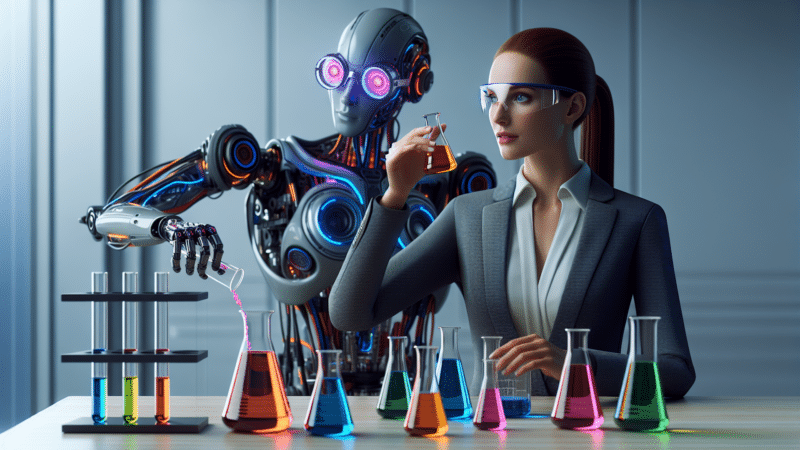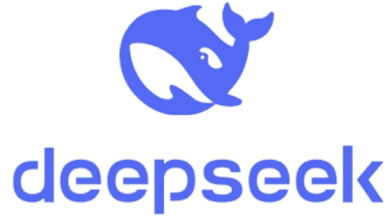Why DIY experimentation is critical to AI success

In a recent presentation for students at the University of Wisconsin-Madison, I emphasized the importance of expanding the use of AI beyond traditional applications like homework and social media. I posed the question: Can AI be both over- and under-hyped?
After careful consideration, I concluded that yes, AI can be both over- and under-hyped. This realization led me to another important insight: Our perception of AI will be heavily influenced by our willingness to invest time in DIY AI training and experimentation.
It is crucial to experiment with new technologies, especially with AI. I recently reflected on whether I was underestimating the potential of AI and made a commitment to dedicate more time to DIY experimentation.
Engaging in hands-on experimentation with technologies like AI can help shift your mindset and navigate through the challenges that come with highly-touted technologies, ultimately delivering more value to your customers.
Dig deeper: How to do an AI implementation for your marketing team
Remember your ChatGPT moment
Over the past two years, we’ve all experienced a sense of AI vertigo. Personally, I had a fortuitous encounter with ChatGPT’s release in late 2022. At that time, I had decided to take a break from my corporate leadership role and delve into consulting and teaching. Little did I know that this break would coincide with the launch of ChatGPT, which OpenAI referred to as a “low-key research preview.”
During my break, I had the luxury of time for self-directed learning, testing, and exploration. Many of my colleagues who were still in corporate roles lacked this time for experimentation and were quick to dismiss AI as over-hyped.
Having the opportunity for DIY experimentation allowed me to see the true value of AI, despite any limitations. It was a transformative experience that reshaped my perspective.
Crossing the AI DIY Chasm
To illustrate the significance of DIY time in creating value, I created a hype cycle graphic depicting various training milestones that we all go through.
Gap 1 represents the time between the launch of a technology and when you begin learning about it, often triggered by external factors like job requirements or peer networks.
Gap 2 is not only about utilizing the technology but also about crossing what I call the “DIY Chasm.” It involves navigating through challenges and reaching breakthrough moments on your own terms.
The cumulative time between Gap 1 and Gap 2 has a profound impact on the gap between the personal productivity and the value derived from AI.
In my previous roles, I would have shared similar sentiments about AI being over-hyped. The demands of managing daily projects had set in established patterns for handling martech. However, with AI’s capabilities transcending those limits, further experimentation becomes crucial for optimizing results.
Two years later, I faced the challenge of breaching Gap 3. As my teaching and consulting work reduced my time for DIY experimentation, the rapid evolution of AI posed new challenges. Despite feeling occasionally overwhelmed, dedicating more time to testing always led to enlightening moments.
It became clear to me that I was the limiting factor, not the AI technology itself. Staying connected with thought leaders who remind us that the current AI is just the beginning has been instrumental.
More content. Is it any better?
I attribute much of my “citizen martech” perspective to Scott Brinker’s influence. I recently skimmed through the latest MarTech for 2025 report by Brinker and Frans Riemersma, albeit without the thorough review I would have preferred due to time constraints.
A quick glance at the report highlighted the predominant AI use cases focused on content and personalization across various stages of ideation and distribution. The sheer volume of mentions of these applications alone indicates that the impact of AI is not exaggerated.
However, the ultimate test lies in whether customers perceive these improvements. My recent AI DIY experiments shed light on the future of personalization.
Dig deeper: Consumers are underwhelmed by AI experiences
Personalized content ‘channels’
While I plan to delve deeper into Brinker and Riemersma’s report, I want to share two AI-driven shortcuts that helped bridge the value gap and hint at the future of personalized content.
First, I used ElevenLab’s Reader to listen to AI-generated readings of Brinker’s chiefmartec articles before a recent drive. This under-hyped tool significantly transformed my consumption of lengthy content.
Next, I fed the full report into Google’s NotebookLM and listened to the AI-generated audio overview. This feature creates a podcast-like summary of the source material, providing a unique way to absorb content.
I also utilized NotebookLM to generate an AI overview of my recent series of articles for MarTech.
NotebookLM’s ability to personalize content based on source material is incredibly powerful, offering a tailored learning experience. As one of NotebookLM’s creators mentioned, it’s like having a personalized AI expert in the information you care about.
If you’re intrigued by NotebookLM, I encourage you to explore beyond just the audio overview. Engaging with AI in this manner allowed me to have meaningful interactions with the content and its creators.
Screenshot of NotebookLM answering a question using source material.
This experience prompted me to prioritize the content layer in my 2025 learning plans, as discussed by Rasmus Houlind. This involves leveraging multiple content LLMs in a martech stack to enhance personalization.
Houlind’s emphasis on incorporating customer tone and utilizing data from past interactions aligns with my proposals in Part 2 of my series.
Our roadmap to personalization
This personalized content discovery is a culmination of the trends I’ve explored in 2024. The ROI of crossing the DIY Chasm with genAI two years ago was significant, but as we navigate through AI vertigo, dedicating more time to DIY experimentation has become even more critical.
Despite time constraints, the AI-infused tools discussed here provided valuable insights on content personalization. Moving forward, our focus should be on scaling these approaches for our customers.
Contributing authors are invited to create content for MarTech and are chosen for their expertise and contribution to the martech community. Our contributors work under the oversight of the editorial staff and contributions are checked for quality and relevance to our readers. The opinions they express are their own.
Frequently Asked Questions
1. How can DIY AI experimentation benefit individuals and businesses?
Engaging in DIY AI experimentation allows individuals and businesses to gain firsthand insights into the capabilities and limitations of AI technologies. This hands-on approach can lead to innovative solutions and a deeper understanding of AI’s potential value.
2. What are some practical AI tools that can enhance content personalization?
Tools like ElevenLab’s Reader and Google’s NotebookLM offer AI-driven features that can significantly improve content personalization. These tools provide unique ways to consume and interact with content, ultimately enhancing the user experience.
3. How can businesses leverage AI to improve customer engagement?
By utilizing AI tools for personalized content creation and delivery, businesses can enhance customer engagement. AI can help analyze customer data, predict preferences, and tailor content to individual needs, leading to more meaningful interactions.
4. What challenges might businesses face when implementing AI technologies?
Businesses may encounter challenges such as data privacy concerns, integration issues with existing systems, and the need for specialized AI skills. Overcoming these challenges requires careful planning, resource allocation, and a commitment to ongoing learning and experimentation.
5. How can individuals stay informed about the latest trends and developments in AI?
Individuals can stay informed about AI trends by following thought leaders, participating in industry events and webinars, and engaging with AI tools and resources. Continuous learning and exploration are key to staying ahead in the rapidly evolving field of AI.




